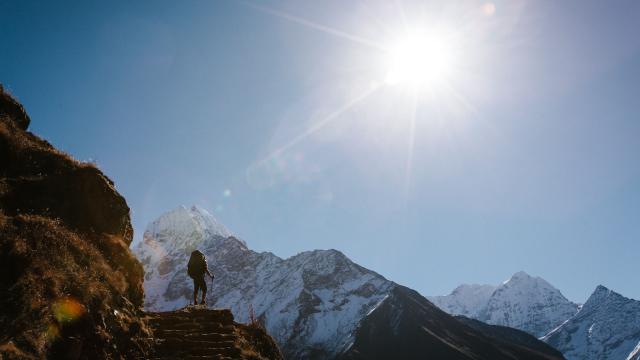Altitude sickness can make you dizzy, nauseous, and, in extreme cases, can even kill you. All of us here have experienced it. Here’s what we’ve learned and how you can minimise its symptoms.
What is altitude sickness?
Altitude Sickness, which is officially known as Acute Mountain Sickness (AMS), is the effect on a person caused by rapid exposure to low pressure at high altitudes and the subsequently lower volumes of oxygen that thinner air contains.
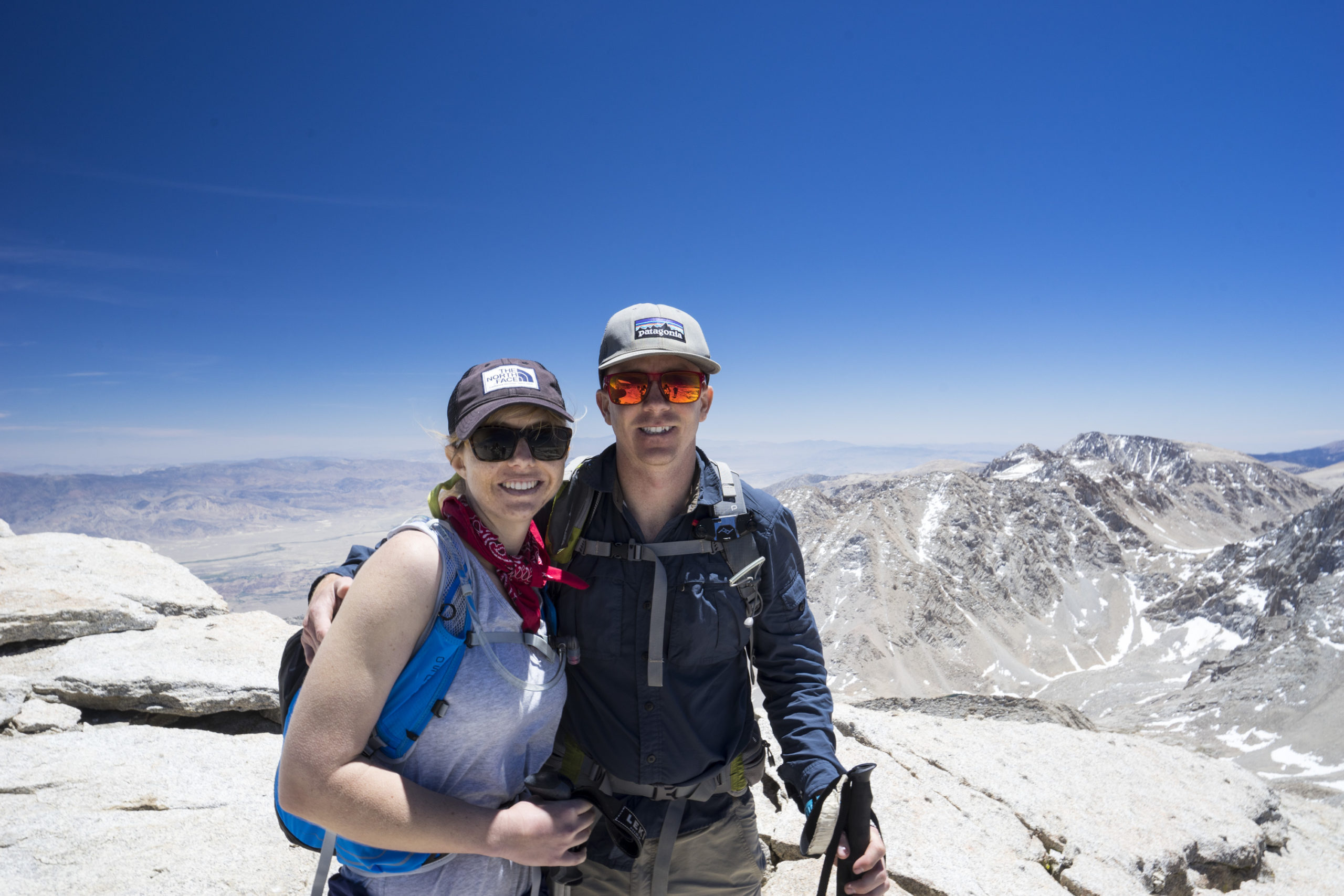
Happy to be on the summit of the highest peak in the continental US, but more excited to go down. Mt. Whitney stands tall at 14,508 feet.
Our atmosphere is made up of 21% Oxygen, 78% Nitrogen, and less than 1% of other gasses including Argon and Carbon Dioxide. This is the same no matter where you go regardless of altitude (for this article, we will disregard the effects of cities and pollution). When you ascend in altitude, the atmospheric pressure decreases because there is physically less atmosphere above you. At the beach, elevation 0 feet, the atmospheric pressure is 1 atmosphere = 14.7 psi, 101.325 kPa, 29.929 in Hg. At 10,000 feet in elevation, that pressure drops down to .69 atmosphere = 10.11 psi, 69.681 kPa, 20.584 in Hg. If we assume that temperature remains constant (even though we know it decreases as you ascend), that is a huge 31 per cent decrease in atmospheric pressure, and correspondingly 31 per cent less oxygen. Up at the summit of Mt Whitney, 14,508 feet, the pressure decreases even further to .58 atmosphere = 8.52 psi, 58.743 kPa, 17.347 in Hg. If you are crazy like Chris and climb 20,000-foot peaks, you will be breathing in oxygen that is has less than half the oxygen, 46 per cent to be exact, than that at sea level.
What do the symptoms look like?
At higher altitudes, your body is struggling to supply your vital organs with all the oxygen it needs because there is physically less oxygen available in every breath you take. This is why people often to begin breathing quicker and hyperventilating when at higher altitudes. The most common symptoms include:
- A headache
- Fatigue or extra weakness
- Irregular breathing
- Difficulty staying asleep
- Loss of appetite
- Nausea or dizziness
- Rapid Pulse

The Mt Whitney trail is a highway in the summer months. 6 switchbacks down, only 93 more to go.
While 10,000 feet is considered high altitude by most, these symptoms are unique to each and every person and can show themselves as low as 6,500 feet. It is extremely important to listen to your own body.
How do you prevent AMS?
The best and easiest thing to do if you know you are going to be going into high altitudes is to acclimatize. This is a process where you slowly increase your elevation, day by day, allowing your body to gradually adjust to the increase in elevation and decrease in oxygen. When we climbed Mt. Whitney this past month in a single day, we left the beach at noon on Friday and were on the summit of Whitney by noon the next day, this is not proper acclimatization, and we suffered because of it.
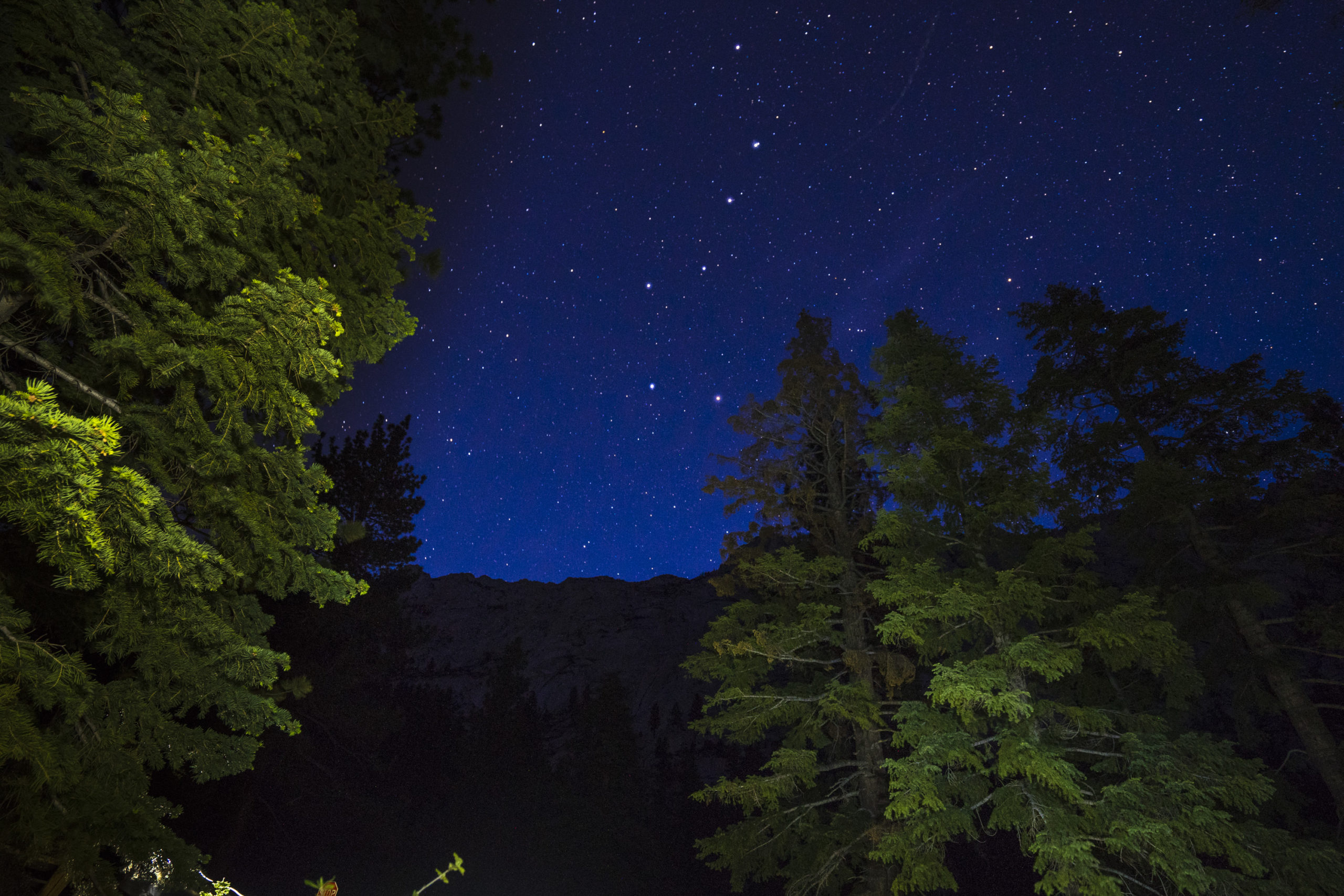
Sleep at altitude and you’ll usually be blessed with the clearest sky you’ll ever see. Hey there big dipper!
Sleeping at altitude has been shown to have the same effect on the body as being active at 2,000 feet above. It is a good idea to venture high and sleep low.
This is the tactic that most climbers on Mt. Everest will do, leap frogging their way to the top by venturing up to the next camp above, then returning to the camp below to sleep. This is forcing your body into the next extreme environment, but also allowing it time to get used to it by descending back down at night.
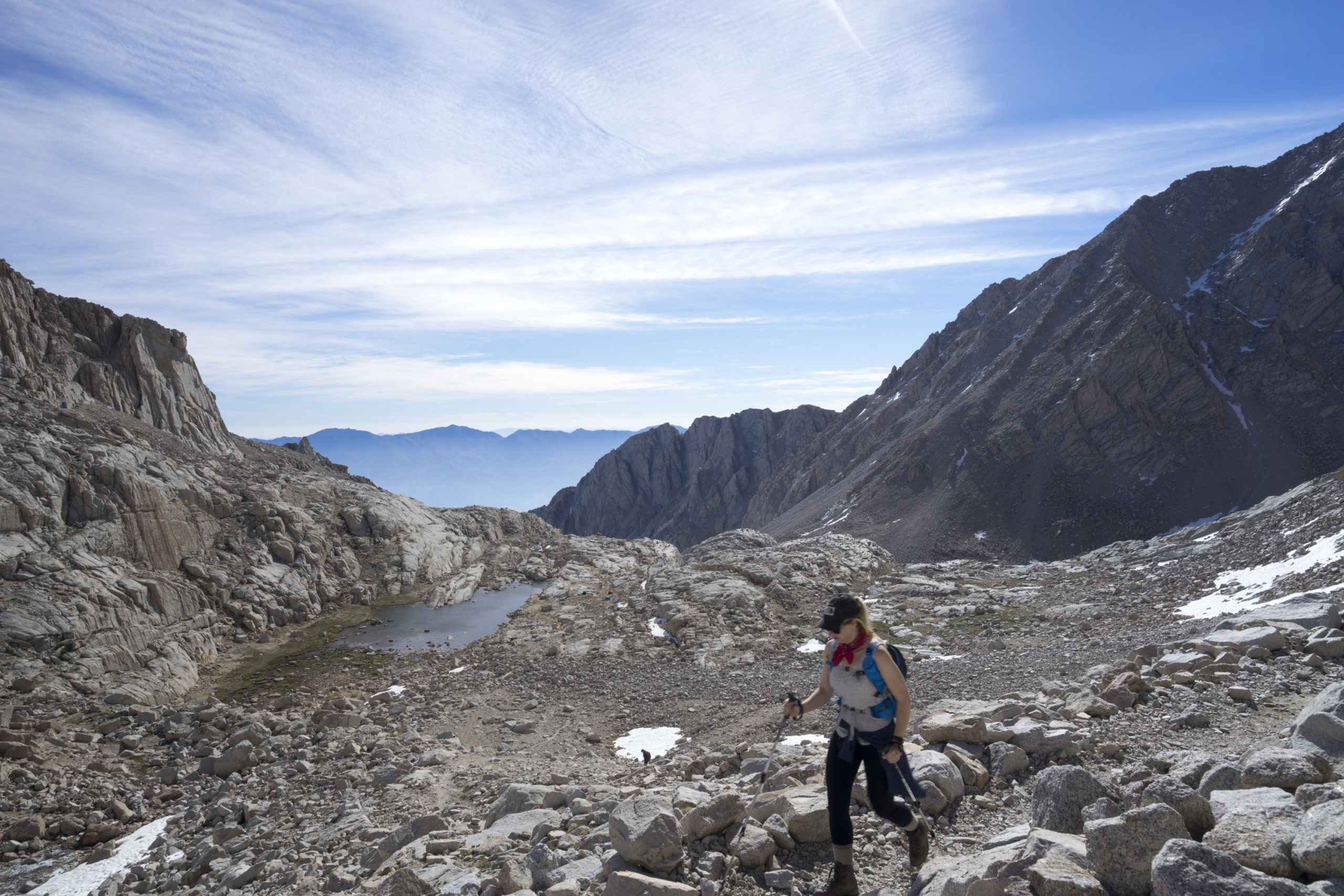
The small lake next Trail Camp at 12,000, shown below, is the last place on the trail to get water before heading for the summit of Whitney.
Staying hydrated during your climb is one of the single most important things that you can do. Because you can quickly lose your appetite and thirst from AMS, you will just as quickly become dehydrated.
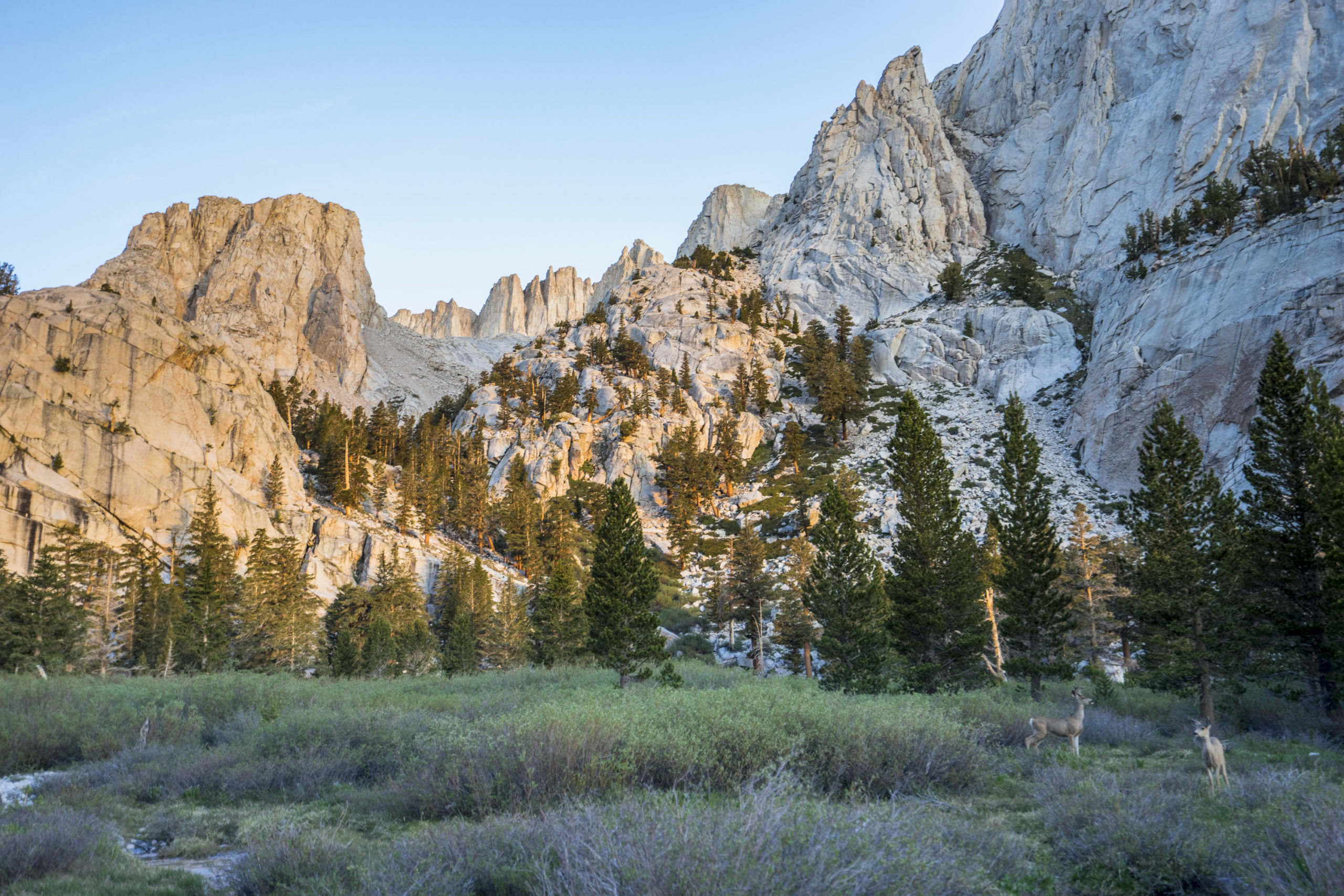
Mt. Whitney can be seen poking up in the back, these two critters were unfazed by us. If only it were deer season…
Some people begin taking aspirin preemptively before ascending. There are also other prescription drugs that have been shown to help with AMS like Diamox, dexamethasone, and nifedipine. You should consult your doctor to see if any of these may help you.
How do you treat AMS?
Go down! It can be a difficult thing to do, especially when the peak is in sight, but if ignored, the effects of AMS can quickly escalate in to something more serious like High Altitude Pulmonary Edema (HAPE) or even something as fatal as High Altitude Cerebral Edema (HACE) where your brain swells with fluid. If you do not have too severe of symptoms, you may be able to rest at your current elevation and acclimate.
Aspirin may be able to help alleviate some of the symptoms like a headache, but should not be relied on. If you have any oxygen available, this is what your body is craving. Breathing from an oxygen tank may help your body recover but is likely not an option for most.
The single most reliable thing you can do is descend. It often times take up to 3,000 feet before the effects of AMS wear off.
Personal experience
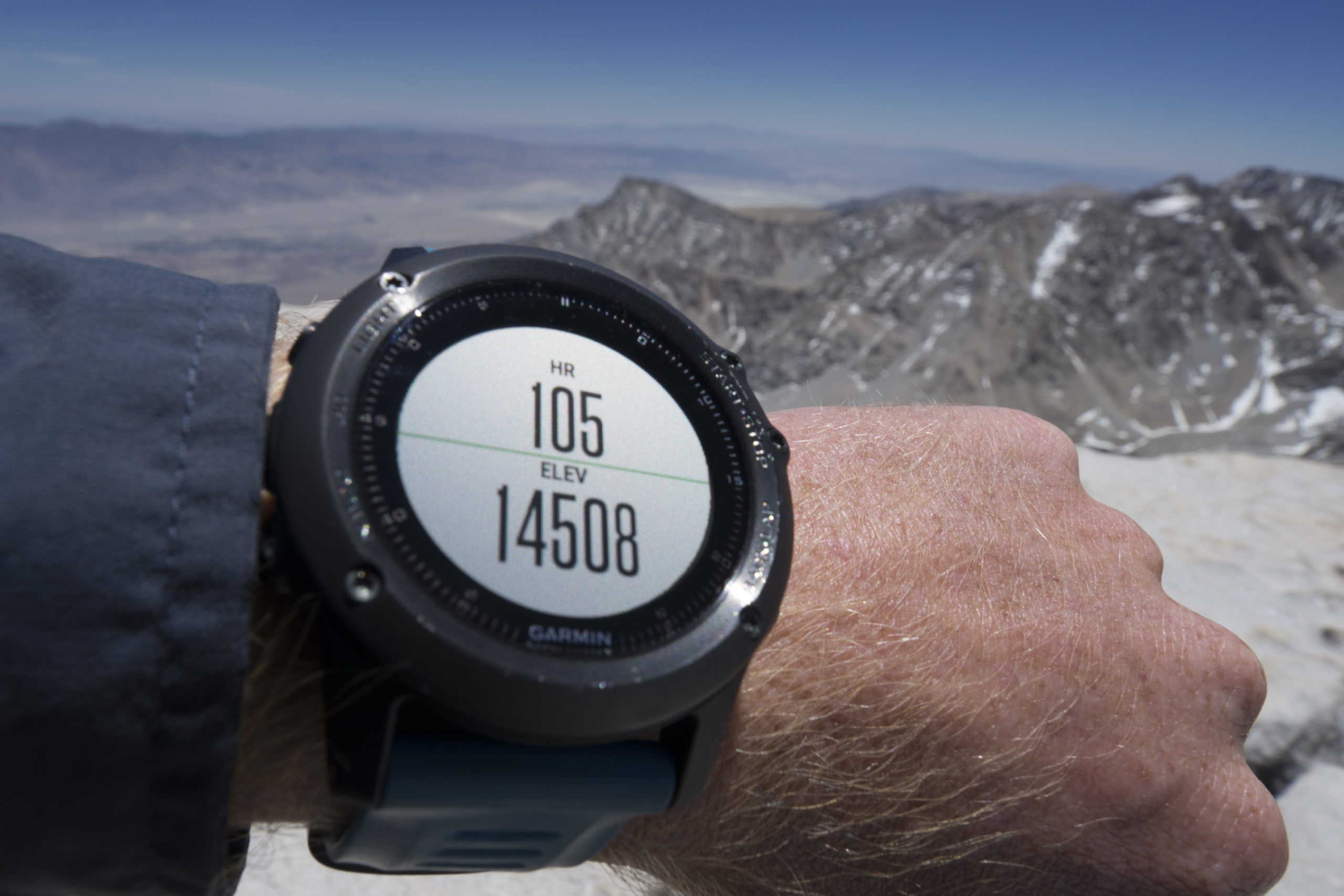
The Garmin Fenix 3 kept track of my vitals and confirmed what I thought, we need to get the heck out of here!
I have personally never had a problem with altitude until I climbed Mt. Whitney. I had hiked and backpacked up to 12,000 feet and skied in the 12k foot range in Colorado. I thought I would be fine, but I was wrong.
Once we ventured above 13,500 feet, I could tell that I had AMS. I had zero appetite, and I could not even drink. My breathing was extremely short, my heart rate would not drop below 105, and I felt like I was going to throw up. We ultimately made it to the top, and this may not have been the smartest thing to do. It was so difficult feeling like a zombie while so many other people on the trail appeared to be fine. Valerie had to force me to drink every 5 minutes because I just was that out of it. She too had some symptoms of AMS, but did much better than me.
This is the kicker with AMS, it doesn’t matter how good of shape you are in, or if you are the toughest tough guy out there, AMS affects each and every person differently. Ultimately, no summit is worth your life. It will always be there, patiently waiting for you to come back and bag it if you can’t make it this time.
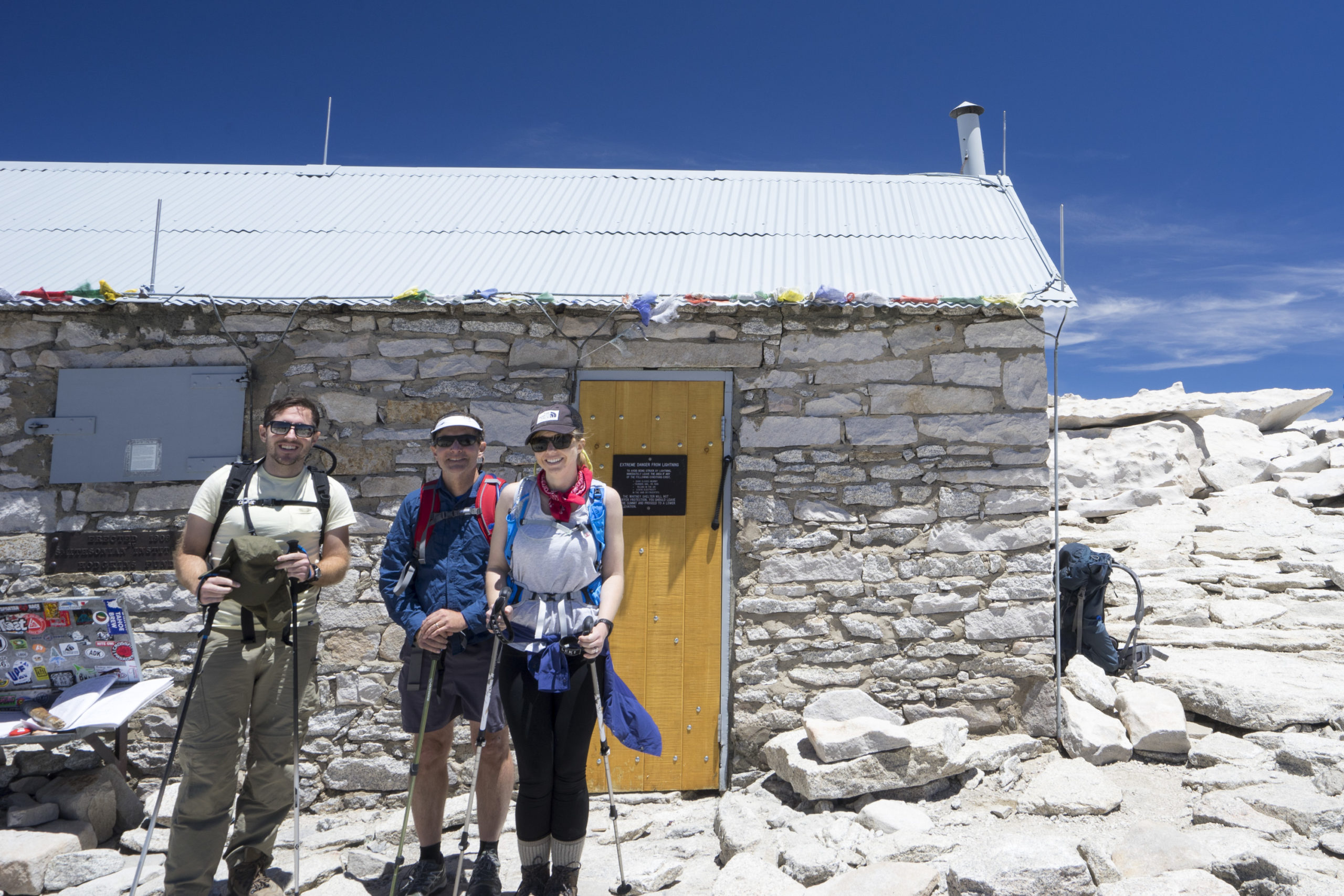
A family affair, Val’s brother Kyle (left), dad Mark (middle), and mum (not on this trip) have each summited Whitney before. We were the last of the family to make the trip but happy that we could do it with them. They both powered to the top this time.
Valerie and I are headed up to Whitney again this weekend. This time, we will be camping at Trail camp at 12,000 feet and letting our bodies acclimatize more, hopefully I won’t feel like a walking piece of poop this time as we head for the summit.
I am attempting to climb Mt Whitney three different ways this year to show you the best way to do it, follow our adventures here on IndefinitelyWild!
I have some experience with altitude sickness too. Everyone is affected by altitude differently; my personal experience has shown that acclimation can create drastic differences in the body’s performance. For example, the first time I climbed Mt. Whitney was in the winter. We spent about three days acclimating, training, and sleeping between 9,000-12,500′. By the fourth day when we summited, I couldn’t feel the difference between the highest point in the contiguous United States and the sea level elevation I lived at in Los Angeles.
In constrast, this past April, my buddy Gil and I drove up from LA with ambitions of tackling the 13,711′ Mt. Abbot (located in the eastern Sierra about an hour north of Bishop) in a day. At over 10,000′, the parking lot and trailhead for Mt. Abbot are the highest in the Sierra. We grabbed a few hours of sleep before beginning the climb.
Gil made it all the way to the summit, but I stopped a few hundred feet below. Why? Because I was experiencing AMS (headache, nausea) — the same symptoms I had experienced at 18,000′ on my descent from the summit of Imja Tse in the Himalayas. Instead of continuing to the summit of Mt. Abbot, I played it safe and rested down below. By the time Gil and I made it down from the mountain’s slopes my symptoms had receded. — Chris Brinlee Jr.
Pictures: Chris Brinlee Jr, Corey Hass
